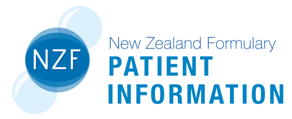What does it do?
Linezolid is used to treat bacterial infections.
Before you start
- Tell your doctor if you have kidney problems, have ever had a seizure, or if you have depression.
- Tell your doctor if you are pregnant, planning to become pregnant, or breastfeeding.
- Tell your doctor if you have phenylketonuria (PKU). The linezolid liquid may contain aspartame (a source of phenylalanine).
How should you take it?
Take linezolid regularly as directed. Keep taking it until the course is finished, even if you start to feel better.
Measure the liquid carefully with an oral syringe or measuring spoon. Gently turn the bottle upside down a few times before measuring each dose but do not shake the bottle.
What if you forget a dose?
If it is nearly time for your next dose, skip the missed dose and take your next dose at the usual time. Otherwise, take the missed dose as soon as you remember. Do not take two doses at the same time.
Can you take other medicines?
Some medicines available without a prescription may react with linezolid including:
- some migraine medicines, such as sumatriptan (e.g. Sumagran Active®)
- cold and flu medicines containing phenylephrine (e.g. Sudafed PE®)
Tell your pharmacist or doctor about all medicines or treatments that you may be taking, including vitamins, herbal products (e.g. St John's wort) or recreational drugs.
What side effects might you notice?
| Side Effects | Recommended action |
|---|---|
|
Reduced number of blood cells that fight infections or help your blood to clot - symptoms include: fever, chills, sore throat or generally feeling unwell, or easy or unusual bruising or bleeding Seizures Changes in vision Symptoms of a very rare but serious problem called lactic acidosis including: nausea, vomiting, diarrhoea, weakness, muscle pain, fast breathing |
Tell your doctor immediately |
|
Numbness or tingling of the fingers or toes Severe or persistent diarrhoea, abdominal pain |
Tell your doctor |
|
Diarrhoea, stomach upset Headache Changes in taste |
Tell your doctor if troublesome |
If you notice any other effects, discuss them with your doctor or pharmacist.
Other information:
- Some people who take linezolid may be very sensitive to tyramine which is present in some foods and alcohol (e.g. cheese, meat or yeast extracts (e.g. Marmite®, Vegemite®, Oxo®), pickled fish, broad bean pods, sauerkraut, salami and protein drinks). People taking high doses of linezolid may need to avoid large amounts of these. Discuss with your health professional.
- Linezolid can cause a serious condition called serotonin toxicity when used with some other medicines. Stop taking linezolid and tell your doctor immediately if you are feeling confused, have muscle twitching or shaking you can’t control, heavy sweating, or a fever.
- You will need regular blood tests while taking linezolid to monitor its effects on your blood.
- Store linezolid liquid as directed. Once the course is finished, take any leftover liquid back to your pharmacy.
This leaflet contains important, but not all, information about this medicine.
Prepared by the MyMedicines Committee at Christchurch Hospital, Te Whatu Ora - Waitaha, New Zealand. January 2024
For more general information about this sheet and its contents, see: What does a My Medicines sheet cover?
Te Reo Māori
Te Reo Māori information sheets supported by Health Quality and Safety Commission New Zealand
Web links for this sheet in different formats
Click on buttons to copy web addresses for this leaflet:
If your browser does not automatically copy these links use its copy command instead.
About My Medicines
My Medicines Patient Information Leaflets (PILs) contain important, but not all, information about the medicines they describe.
For more information about the sheets, see: What does a My Medicines sheet cover?
My Medicines is developed by a team at Te Whatu Ora – Waitaha. Our team is made up of doctors, pharmacists, and a non-medical person to help us keep to plain language. We also discuss our information with specialist health professionals or groups when needed

